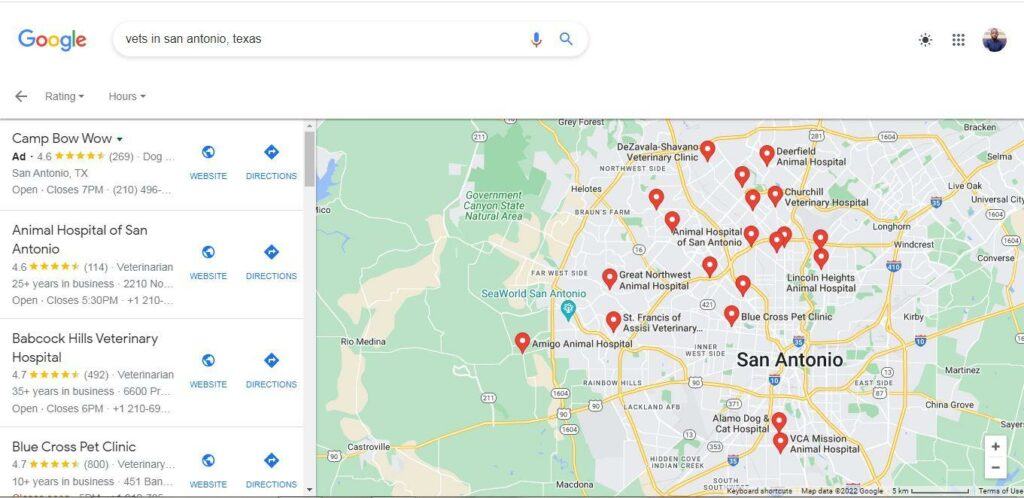Alex Lysak
CEO at SEOBROTHERS. I have 10+ years of experience in online marketing. We are building a strong iGaming affiliate team and aiming to become number one in this
“Why is my business ranking behind others?” Answering this question demands in-depth analysis, primarily because of the dynamics involved. So, in this...

Image Credits: pexels
“Why is my business ranking behind others?”
Answering this question demands in-depth analysis, primarily because of the dynamics involved.
So, in this article, I will show you three steps to investigate this problem, focusing on over twelve possible factors affecting your business’ ranking on search engines. You will also learn how to improve local SEO and outsmart the “big guys” in this game.

Your business competitors can be actual or potential. Real competitors outrank you while potential ones grow at a pace that will make them surpass your business soon. Your focus when performing an audit would be on those currently outperforming you on Google.
Because a business ranks ahead of yours does not make it a competitor. If Wikipedia offers the same service as yours, you wouldn’t want to see it as a competitor. The same goes for a local government establishment; their official advantages and privileges may be something you cannot meet.
While several online tools claim to help fish out business competitors, I recommend that you conduct a manual search. Some automatic finders usually include unrealistic results, which may affect your audit. But manual searching can reveal your real business rivals, and you can start learning a lot as you identify them.
The steps below can help identify your local competitors as you kick-start the auditing process:
Pro Tips: You need an Excel or Google spreadsheet to record and organize your findings neatly. The sheet should contain at least four columns and twenty-five rows. The first column should have the audit parameters, while the second can be for wins.
When your business outperforms the competitor’s for a given factor, you can record your business name and vice versa. The next column should be for notes, especially on how to increase local SEO based on that parameter.
As the local audit begins appropriately, it’s time to investigate your competitor’s secrets using many parameters. Some of the topmost factors include:
The first thing you want to beam your searchlight on is how your competitor crafts their brand name. Your focus would be to determine whether they included keywords. Suppose your search phrase is “Vets in San Antonio”, and their brand name is “San Antonio Veterinary,” while yours is “Furry Clinic.” In that case, keywords in their name are one reason they outrank you.
The ranking advantage of keywords in a company’s name may not be much, but it’s safe to include it. Google’s tradition is to always give preference to businesses with relevant keywords in their name. While the 2021 Vicinity Update may appear to downplay this practice, there are indications that it still matters.

Google often places a red border around cities on their maps; if your business does not fall within this border, it might not rank as one within. So, check this out by confirming if your business is within its Google perimeter.
The centroid is a reference to the placement of your city on Google’s knowledge panel. Consider how close your business’ address is to your city’s address on this centroid and do the same for your competitor. It might be a competitive advantage if your brand’s address is far from the city’s while your competitor is closer.
Two businesses offering similar services sometimes share identical addresses. Where this occurs, Google typically filters one or some of them out from search results. This phenomenon is known as Google’s Possum, and a 2016 update confirmed that no fewer than 64% of local SERPs are affected.
Check for co-location for your competitor’s company and yours on Google Map. By zooming in, you can see whether similar businesses share the same address as yours. If another identical company exists at your address and not your competitor’s, that can be a considerable edge.

When you click on your competitor’s website from Google’s Business Profile, where does it land on their website? Their homepage or somewhere else? Check yours too and see where it takes your visitors to on your website.
Homepages are the strongest “selling points” of most websites. The reason for this is simple. Record this finding on your Excel or Google sheet.
The next thing you should do in your auditing endeavor is to match the Name, Address, and Phone Numbers (NAP) on your website with what is on Google’s Business Profile (GBP). Repeat this process for your competitor to determine discrepancies.
Whoever has a perfect information match takes the win here. Contractions don’t count, but the name or address disparities are enough for Google to decrease a company’s visibility.
Reviews play many roles in local ranking, but this factor has several dynamics. First, you must consider the overall rating star of your company and that of your competitor. Of course, the closer the rating is to 5, the better the company’s conversion.
Second, consider the number of reviewers for your competitors and yours. For instance, a 4.4-star rating from 12,000 people portrays more credibility than a 4.6 from 100. Besides these figures, you should also check out the general sentiments of these reviews – are they largely negative, neutral, or positive? If reviewers constantly praise your competitor’s business for a factor, that may give a local ranking advantage to them.
Consider whether your competitor responds to customer reviews. If your business fails to engage reviewers, mark it as a plus for them. Another factor to consider here is the recency of comments. Look at the first fifty feedback of your competitor and compare how old they are to yours.
When you type your business name on Google, check the web results for third-party links to your website. The focus here is on the number and quality of those third parties. If your competitor has more authoritative third-party links to their website than yours, they’re the winner.
This factor does not improve local SEO but adds to other things; it can make a difference. When last did your competitor post compared to yours? The business that posts regularly and recently gets the “win” mark.
Nowadays, photos are now powerful and vital elements for listings. As it goes, the business with the most images of excellent quality ranks ahead of others without it. Also, the plus increases if the business owners are the posters of such images.
Although these parameters are not exhaustive, you would have started seeing why your competitor ranks ahead of you locally. List out those areas and see how you can meet up and surpass them. You may not have power over your location, but things like images, data correctness, and keyword insertion are pretty controllable.
The goal of a local audit should never be to produce a carbon copy of another business or edge them out of business. Instead, it should be that you want to identify some marketing areas that you need to improve. It should also give you insights on how to stand out within what is usually stiff competition.
In the auditing process, whatever you notice as your competitor’s weakness should help you develop a unique local brand with great value to local consumers.
Suggested:
Local Business SEO – Taking Advantage of Google Maps.
How To Ensure That Google My Business Page Rank High?
How to Protect Your Online Business from Google Updates?
Hi Alex,
I have found the more reviews someone has the better they rank, is that a big factor as well? Thank you.
Hi Liza,
You are observant 🙂
Yes, I believe that this is one of the important ranking factors for our sites.
Have a good day.